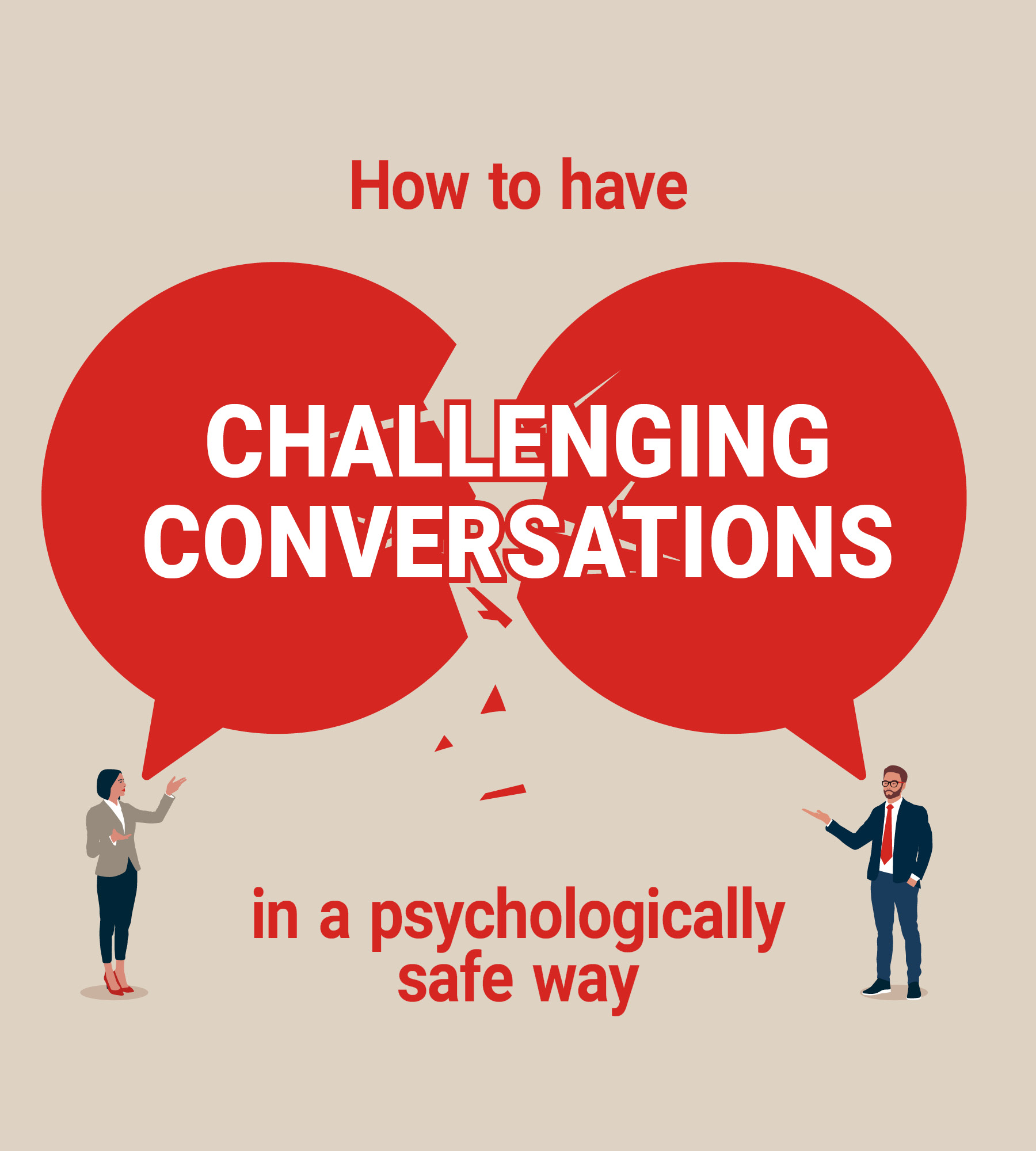Language
You can read the magazine in one of the following languages
Challenging conversations are unavoidable in leadership. Whether you’re delivering tough feedback, addressing conflict or raising concerns, these conversations are essential for progress and healthy working relationships. However, how you handle them makes all the difference in creating a positive outcome or deepening the divide.
The key to success in these conversations lies in psychological safety. A psychologically safe environment allows people to express themselves openly without fear of judgment or blame. When people feel safe, difficult conversations become opportunities for growth rather than confrontations to avoid.

Before diving into a difficult conversation, manage your emotions. When tensions are high, emotions – whether yours or the other person’s – can derail the discussion. If you go in frustrated or defensive it will escalate the situation.
Take a moment to reflect and calm yourself. As a leader, your role is to model the behavior you want to see. If you remain calm, the other person is more likely to follow suit, setting the stage for a respectful exchange.

One of the most effective ways to reduce defensiveness is to be upfront about your intentions. Let the other person know from the outset that the conversation is not about blame but improvement. You could say: “I want to discuss this because I value our working relationship and want to see this project succeed.”
Being transparent about your intentions helps build trust and reassures the other person that the conversation is coming from a place of care and respect.

Language plays a big role in maintaining psychological safety. Instead of saying, “You never meet deadlines”, reframe it with ‘I’ statements: “I’ve noticed we’ve been missing some deadlines, and I’m concerned about how it’s affecting progress.”
This shift takes the focus off the individual and avoids sounding accusatory. ‘I’ statements express how you feel without placing blame, making it easier for the other person to engage without feeling attacked.

When conversations get tough, it’s easy to become defensive or jump to conclusions. Instead of reacting impulsively, get curious. Ask open-ended questions like: “Can you help me understand what happened from your side?”
Curiosity shows you’re interested in understanding the other person’s viewpoint. It’s empathy in action – creating space for open communication that helps uncover underlying issues. This builds psychological safety and leads to better solutions.

One of the greatest barriers to effective communication is not listening. In a difficult conversation, it’s tempting to dominate the discussion to make your point. But psychological safety depends on the other person feeling heard.
Let them speak without interruption. Active listening – making eye contact, nodding and acknowledging their points – helps the other person feel acknowledged. Even if you disagree, allowing them to explain fully prevents misunderstandings and creates a more collaborative atmosphere.

When delivering difficult feedback, separate the issue from the individual. Instead of saying, “You’re not doing your job properly”, focus on specific behaviors. “I’ve noticed that in the past few meetings, your communication has been quite abrupt. Are you OK?”
By focusing on the behavior, you make it about what they did rather than who they are. This reduces the likelihood of the other person feeling attacked while allowing you to still hold them accountable.

Once you’ve addressed the issue, shift the focus to solutions. A challenging conversation shouldn’t end with identifying a problem – it should end with a plan for moving forward. Collaborate to agree on specific steps. For example, if the issue is missed deadlines, you might agree on regular check-ins or revised timelines.
Clear action points provide structure and show that the conversation is about finding solutions, not just raising concerns.

Psychological safety doesn’t end when the conversation is over – it’s built over time. After a tough conversation, follow up to show you’re committed to supporting the other person and improving the situation. Schedule a follow-up to check in on progress and make adjustments if needed.
This reinforces accountability on both sides and ensures the solutions are working, keeping the relationship strong.
Challenging conversations are essential for leadership and team success. By regulating your emotions, being clear about your intentions, listening actively and focusing on solutions, you can create a psychologically safe environment where people feel respected and heard. Done right, these conversations build trust, strengthen relationships and lead to growth.

Leah Mether
Contributor Collective Member
Leah Mether is a speaker, trainer, facilitator and author known for her direct, enthusiastic and relatable style. With a background in leadership, corporate communications and journalism, she works with executives, leaders and teams across Australia to help them improve their communication and self-management. With more than 15 years’ experience working with thousands of clients, Leah knows what it takes to communicate under pressure. For more information visit https://www.leahmether.com.au/
